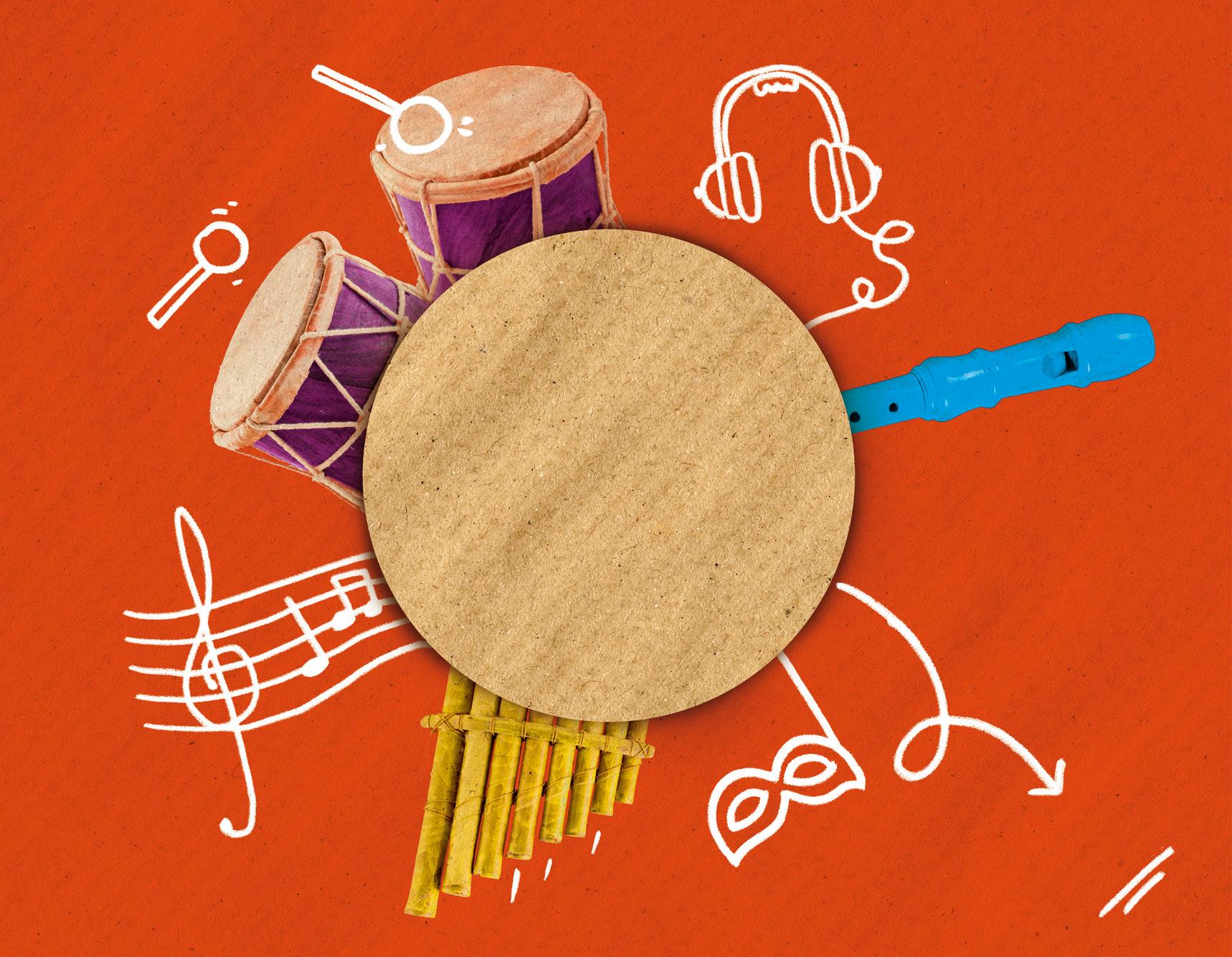
sample
PRIMARY 3 MUSIC Globalaction DIGITAL PROJECT INCLUDED
What are we going to
learn?
1 Get active with music!
Think about which musical activities can be beneficial to your health and organise them on a visual map.

2 Come to the festival!
Reflect on how to celebrate concerts and musical parades at festivals in a sustainable way. Make a leaflet with the disadvantages of this type of event and proposals for improvement.

• Hearing and listening concepts.
• The beat: duration of musical symbols.
• Sound quality: pitch.
• Duple metre.
• Musical language: scale notes, key and stave.
• Representation of rhythmic-melodic structures.
• The recorder: the note SI; the flute in Spanish folklore.
• Listening: William Tell (Rossini), Symphonies for the King’s dinners (Delalande).
• Andalusian rhythm. Folk instruments; the zambomba from Jerez.
3 Recycle with rhythm
Plan an advertising campaign to raise awareness about climate change and create a musical advertisement about recycling for it.
• Hand percussion instruments.
• A quadruple metre.
• Auditory identification of rhythms in a quadruple metre.
• Listening: Waltz of the Flowers (Tchaikovsky), Bagatelle, Polka (Waldteufel), ‘Le basque’ (Marin Marais).
• Orff instruments: classification and identification.
• The recorder: the note LA.
• Professions linked to creation and interpretation: Tchaikovsky, Waldteufel, Chuck Berry, Marin Marais.
• Andalusian rhythm. Carnival
• Rhythms in a quadruple metre.
• Listening: ‘Place your Bets’, The Hustle (Anne Dudley); La Bataille (Mozart).
• Instruments from other cultures: visual and auditory identification.

• Professions linked to creation and interpretation: female composers (Anne Dudley).
• The echo as a repetition of a rhythmic or melodic cell.
• The voice: technique for good intonation and types of voices.
• The recorder: the note SOL.
• Andalusian rhythm. The flamenco guitar. Andalusí music.
Good Health and well-being
cities and
Sustainable
communities
Climate action
PAGE PAGE PAGE PERCEPTION AND ANALYSIS LEARNING SITUATION TARGET IN ACTION • SDG 8 32 56
• Songwriters: Banana boat song, Do Re Mi, Rueda rueda.
• Recitation of riddles to identify the beat.
• Interpretation, transcription and creation of rhythms.
• Interpretation and creation with bar instruments.
• Accompaniment of songs and active listening.
• Practice of the duple metre with the bounce of a ball.
• Accompaniment of the notes with the help of phononyms.
• Articulation of the SI sound on the recorder: Christmas in my city.
• Active listening and choreography: Symphonies for the King’s dinners.
• Songwriters: Dem bones, Hooray for the cowboys, De colores.
• Music, movement and drama: El paseíto de don Tomás (Canarias); The Waltz of the Flowers (Tchaikovsky), ‘Le basque’ (Marais); You never can tell (Chuck Berry).
• Accompaniment of songs and active listening.
• Practice of quadruple metre with the bounce of a ball.
• Creation of rhythms to interpret questions and answers.
• Accompanying notes with the help of phononyms.
• Performance on bar instruments: The feared.
• Articulation of SI and LA sounds on the recorder.
• Andalusian rhythm. The flamenco ensemble
• Popular songs and songwriters: Al jardín de la alegría, Kokopelli, Duende, The martians.
• Interpretation and creation of rhythms in quadruple metre.
• Accompaniment of the seven notes with the help of hand signs.
• Active listening and accompanying interpretation: ‘Place your Bets’, The Hustle (Anne Dudley); La Bataille (Mozart).
• Interpretation and creation of variations.
• Choreographies: Oh, Susana!, ‘Place your Bets’, The Hustle.
• Articulation of SI, LA, and SOL sounds on the recorder.
Sound lab.
• Selection of places and recording of sounds with a mobile device.
• Listening and identification in the recording of the sounds obtained.
• Classification of sounds according to their nature and sharing of research results.
The recorder.
• Previous recommendations.
• The articulation of the recorder.
• Exercises to practice articulation.
The note SI.
• Presentation of the SI note and exercise activity.
• Follow me?
• SISI the flautist.
• Instrumental ensemble performance with bar instruments and flutes.
Music for a landscape.
• Selection of an element of a given landscape.
• Search for sound objects to represent their timbre or sonority.
• Unconventional score creation for chosen objects.
• Collective interpretation and creation of a sound landscape.
The notes SI and LA.
• Presentation of the LA note and exercise activity.
• March of the Elves.
• Tea for two.
• The Fox.
The notes SI, LA and SOL.
• Presentation of the note SOL.
• MariSOL SILA sings.
• Melody creation with the notes SI, LA and SOL.
Making a pan flute.
• Search and selection of materials for its construction.
• Making of the flute.
• Creation of a collective score with the notes DO, RE, MI, SOL, LA and interpretation with the constructed pan flute.
• Copacabana.
• SOL, LAura and SIlvia.
• A treasure in the galleon.
Andalusian rhythm.
• Cantes de ida y vuelta.
• El Rocío.
CREATION AND INTERPRETATION PLAY THE PART! Concert hall PAGE 80
1 G et active with music !
Some activities help us to lead a healthier life, such as those related to music, performing and the visual arts. Others, however, generate problems to our physical and emotional health.
What do you think?
Why is it important to lead a healthy life? What would life without music be like?

Target in action
Think about what musical activities are beneficial for your health. Write the answers in a graphic organiser.
Context
Music has got many benefits for people and animals.
8


3
Banana boat song
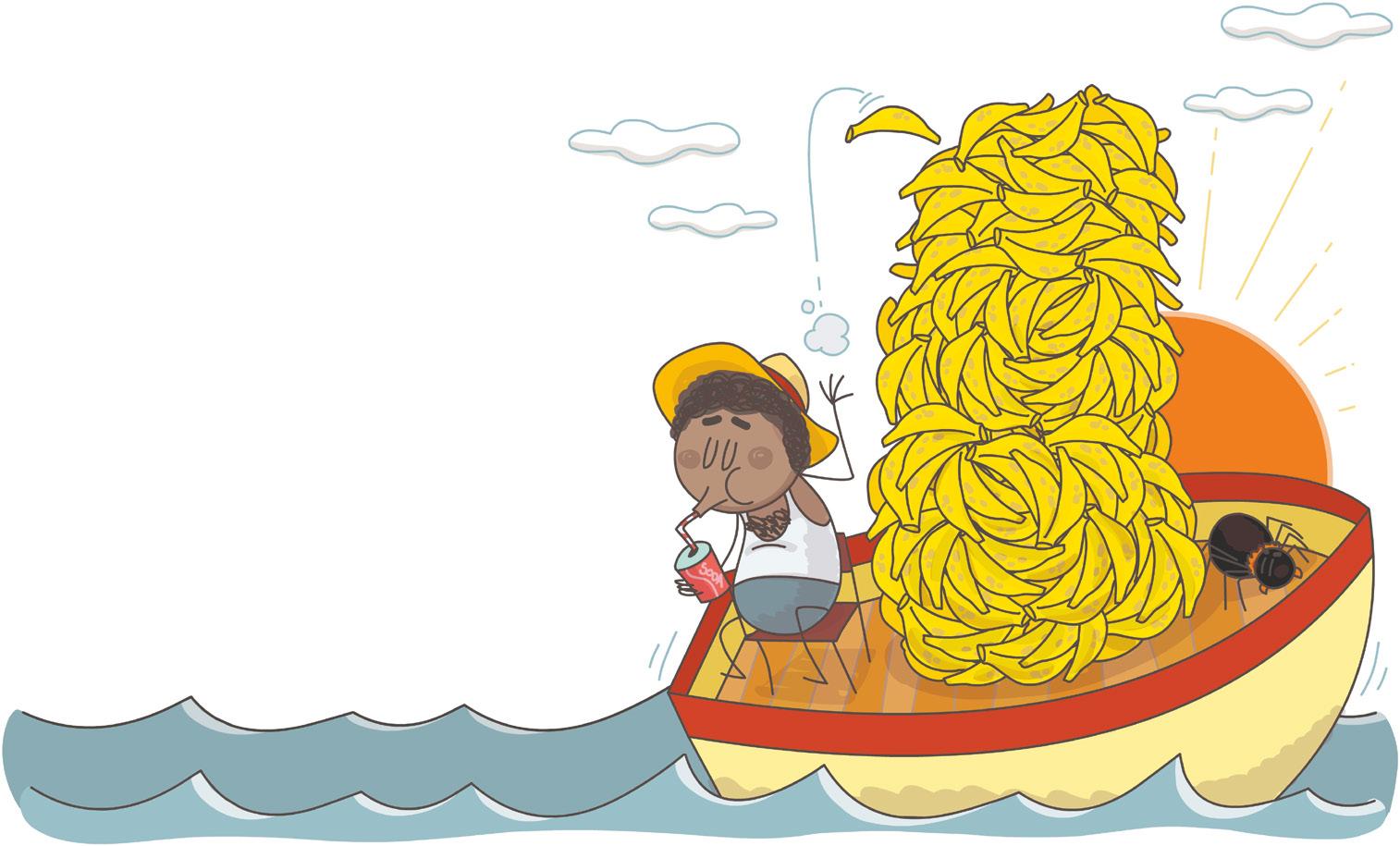
1 Listen, act out and sing. Accompany with percussion.






Day-o, Day-ay-ay-o!
Daylight comes and I want to go home.
Day, me say day, me say day, me say day.

Daylight comes and I want to go home.
I work all night on and drink a soda.
Daylight comes and I want to go home.
Stack banana till the morning come.
Daylight comes and I want to go home.
Come, Mister tally man, tally me banana.
Daylight comes and I want to go home. (bis)
It’s six foot, seven foot, eight foot bunch!
Daylight comes and I want to go home.
Six foot, seven foot, eight foot bunch!
Daylight comes and I want to go home.
A beautiful bunch of ripe banana.
Daylight comes and I want to go home.
Hides the deadly black tarantula.
Daylight comes and I want to go home.
10
SONG
2 Q
Hearing is not the same as listening.
• Hearing is perceiving sounds and silences. We hear, even if we don’t mean to. It requires no effort.
• Listening is paying attention to the sounds we perceive. We listen with the intention to do so and it requires a mental effort to interpret what we hear.

1 Listen to the soundscapes. In your notebook, draw two pictures that represent the sounds. Use different lines, shapes and colours.



11 U1
LISTEN
Soundscapes USE YOUR IMAGINATION
Beat
The beat is the pulsation of music. It is repeated constantly and it serves to compare the duration of figures and rests. The beat can be fast or slow and can get slower or faster. You will see it represented like this: .




If you silently put your ear close to someone’s heart, you can hear their heartbeat •
1 Recite and mark out the beat with percussion. Then listen and do it over the music.




Roosters on the farm say
cock-a doodle (doodle) doo,
neigh (neigh) moo (moo),

cock-a doodle (doodle) doo.
Hands up, hands down, shake them all around.





Hands in, hands out, shake them all about.


Thirty days has September, April, June and November.
All the rest have thirty-one.
Twenty-eight and February’s done.
12 MUSICAL LANGUAGE
• • • • • • • • • • • • • • • •
• • • • • • • • • • • • • • • •
• • • • • • • • • • • • • • • •
The beat indicates the duration of the figures. The crotchet lasts one beat.
2 Read the figures and interpret them by clapping on each beat, represented like this: .

Remember that we can write both the sound of music and silence.
3 Rhythmic dictation. Copy the musical stave in your notebook. Listen carefully to the dictation and write the corresponding figures.

13 U1
ta ta ta Q ti - ti ti - ri - ti - ri ta-an Q ti - ti ta Q
•
Minim
Minim rest Crotchet Crotchet rest Quaver Semiquaver
1 1 2 2 3 • • • • • • • • • • • • • • • • • • • • •
Pitch tells us whether a sound is lower or higher. Between the low and high sounds, there may be other so-called middle sounds.
1 Observe how the size of the bell determines its pitch.

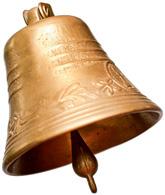

The pitch of the sounds is represented through musical notes.
Low-pitched sound Medium sound
High-pitched sound
2 Let’s check Melodic dictation. Listen carefully and order the sounds in your notebook.


14
Pitch
TON TAN TIN MUSICAL LANGUAGE a b c d
The sound puppet
1 Look, learn and play.
1 Carefully remove the bars FA and SI with both hands.
2 Explore by hitting the low, medium or high sounds with a mallet.
3 Accompany the movements of the person who acts as a puppet using alternate mallets.



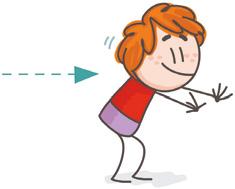
We must maintain the correct posture when playing instruments for our physical well-being.
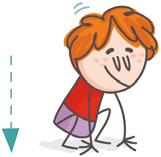

high sounds middle sounds low sounds
2 Read and complete in your notebook.
• The pitch of the sound is on the shorter bars.
• The sound ascends when it goes from the bars to the bars.

15 U1
MUSIC & GAMES
? ? ?
The beat can be organised into groups that are repeated regularly and constantly. It is organised in a rhythmic way. Each group of beats is called a measure. A duple metre has got two beats. On the stave, it is represented like this 2 or like this .
1 Read and observe that when a ball bounces, two beats arise, one stronger and one softer. Circle the strongest.
2 Practice the duple metre while singing this lullaby. Play the beats.
Body percussion exercises our body and improves our physical condition.





Twin- kle, twin- kle, lit- tle-s tar
How- I won- der what you are.
Up a- bove the world so high,
Like a dia- mond in the sky.
16 Bar
Bounce
Bounce
2 4 Catch
Catch
• • • • • • • • • • • • • • • • • • • • • • • • • • • • • • • • MUSICAL LANGUAGE
William Tell
1 Listen and accompany with drumsticks as indicated. Find two sounds so that one is higher pitched than the other. Then complete the beats.









Move the drum sticks in the air.

Gioachino Rossini (1792-1868)
William Tell
Gioachino Rossini was an Italian composer. He was one of the most important opera creators of the 19th century. Despite his great success with previous operas, this was the last one he composed. Perhaps it was due to health problems, since he was relatively young (1829).

17 U1 FORM A A A A I B B C D D
Introduction
A D C (roll)
Group I
Group II
TIN TON B 2 4 • • • • • • • • LISTEN
PLAY THE PART!
Sound laboratory
Pencils in the centre
STEP 1
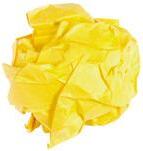
In groups, choose one of these places. Record the place for one minute using a mobile device.



STEP 2


Listen to the recording as many times as you want and write down in your notebook at least six sounds that you can identify.


18
¡¡ »
»
?
STEP 3




Read and match in your notebook:
When I feel... … my heart beats

Classify the sounds you have written down, copy the outline in your notebook and complete it. Share the results of your research with the rest of the groups.

Sounds
Xxxxx
Of nature
Of humans
Of machines
Our mood influences the speed of our heart beat.



U1
19
happy slowly calm moderately nervous
a 1 b 2 c 3 ? ? ?
very fast
Writing music
Music uses a universal language that all musicians understand. Musical notes represent the pitch of sound. There are seven, they go

Singing is very beneficial for the health: it helps us to control our breathing, relate to others and express our emotions.


20
MUSICAL LANGUAGE
Music is written and read on a stave, which is made up of five horizontal lines and four spaces. We read the lines and spaces from bottom to top. The treble clef is placed at the beginning of the stave. It is a musical sign that names the notes.
2 Follow the instructions and copy the stave in your notebook. Draw over the five lines in the order that we read them and colour in the four spaces.
5th line
4th line
3rd line
2nd line
1st line
3 Go over and draw the treble clef in your notebook.

4th space
3rd space
2nd space
1st space
The treble clef is the one we use the most.
4 Copy the stave in your notebook. Write the musical notes and their names.
21 U1
· · · · DO MI SOL SI FA RE LA
? ? ? ? ? ?
?
The flute
The flute is one of the oldest instruments in the world. They can be found in different forms in almost all cultures. We also find flutes in various regions of Spain, some of them are ancestral. Most of them are usually accompanied by a drum or a tabor.


1 Listen and write where each of the flutes comes from in your notebook.



This three-hole flute was found in Germany and is at least 35,000 years old.
2 Search the Internet for videos showing tabor players playing these instruments.


22
INSTRUMENTS
MUSICAL
1. Gaita charra 2. Flabiol 3. Pito rociero 4. Chistu
The recorder
It is a wind instrument. It has got a tube shape and several holes that are covered and uncovered to obtain different musical notes.
The sound is produced inside the tube by the vibration of the expelled air.
Mouthpiece
3 Read, learn and practice the recommendations to get a good sound on the recorder.




Postural control


Maintain a good body position.
Breathing
Administer the air well.
Articulation
Use your tongue to separate the notes with the syllables “du” or “tu” and exhale gently.
Fingering
Place and move your fingers, slightly stretched, as if imitating the shape of a duck’s bill.
23 U1
0
Window Head
1 2 3 4 5 6 7
Body Foot
Duuu, duuuu....
Hand signs

1 Observe and learn the hand signs for the following notes.

2 Copy in your notebook the following fragments, write the names of the notes and sing them while you make the hand signs.

3 Associative Analysis Melodic dictation. Listen carefully and order the sounds in your notebook.


24 ACCOMPANY
SOL LA MI a b c d
1 Listen, act out and sing. Accompany with percussion.


Rueda, rueda por la montaña blanca luz del sol, llega, llega cholo, cholito, que es la Navidad. (repeat)
Vuela, vuela blanca paloma, sigue más allá, lleva, lleva la “buena nueva”, que es la Navidad.
¡Llevaremos la “buena nueva” en Navidad, que esta noche, a media noche, Jesús nacerá.
Singing in a group produces a feeling of wellbeing that is good for our health.

25 U1
SONG
2 Q
Rueda, rueda (Perú)
Christmas in my city
1 Learn the note SI on the recorder. Articulate each sound with the syllable tu. Copy in yout notebook the graphics 1, 2 and 3 and complete them.


To articulate the sounds well, try to control the air that you blow with your tongue with the syllable tu or du.
2 Listen and perform Christmas in my city.

26
PERFORMANCE
2 Q Percussion A B FORM A A B B I x 4 Left hand Right hand SI tu tu tu tu tu_u tu_u tu tu tu_u tu_u tu_u 1 3 2 ? ? ? ? ? ? ? ? ? ? ? ? ? ?
Symphonies for the King’s dinners
1 Listen, dance and accompany as indicated.






Circle in pairs.

B Turn left and turn right.
C She twirls, he twirls.
(8 bars)
Michel-Richard
Delalande (1657-1726)

Symphonies for the King’s dinners
King Louis XIV of France commissioned these symphonies to accompany his dinners at the palace with music.

27 U1
Introduction A A C
2 Q B 2 Q 2 Q
FORM A A A A I B A C PERFORMANCE
Folk instruments
Folk instruments are often used in Andalucía during celebrations to accompany traditional songs. Their main characteristic is that they are easy to play and manufacture.
Almirez
The almirez is played in a similar way to a bell, hitting the inside with the metal mallet.


Cántaro
The sound is made by hitting the mouth of the cántaro with an espadrille. The larger the cántaro, the deeper the sound.
Castanets
In Andalucía, castanets are also called palillos. They are used in dances such as sevillanas or fandangos.

Caña
The caña produces a sound when we shake it of strike it with our fingers.
Pito rociero
The pito rociero is a wooden flute. It has only got three holes: two in the front and one in the back.


Anisette bottle
The anisette bottle is a homemade instrument that you scrape. It is used as a güiro and produces a loud and shrill sound.

28 ANDALUSIAN RHYTHM
The zambomba of Jerez
In Andalucía, as in different areas of Spain at Christmas, it is popular to get together with neighbours and relatives to sing Christmas carols. Everyone participates and accompanies with clapping and with popular and homemade instruments. This is how joy is expressed in traditional Christmas parties. One of the best examples of the Christmas tradition can be found in Jerez de la Frontera (Cádiz).

Festive gatherings date back to the days of old tenement houses. People shared a common patio and a single charcoal stove. There, people sang Christmas carols by the fire and ate Christmas sweets.
The predominant instrument is the zambomba, hence the name of these festive gatherings in Jerez: The Zambomba.
The zambomba is a typical instrument used at Christmas parties and accompanies the singing of Christmas carols.
It’s a friction drum, with a cylincrical or conical vessel made with baked clay. It is closed at the top with a membrane and has got a rod that gets inside the instrument. When you rub the rod, you produce a low and peculiar sound.

1 Imagine that you have been invited to one of those festive Christmas gatherings in Jerez. Write in your notebook the title of any Christmas carols that you know and draw an instrument that you could play.

29
U1
What have I learned?
1 Remember, write in your notebook and complete with figures and rests.
Copy and colour in your notebook:
I know how to do it
I need help

2 Copy the stave in your notebook and create a rhythm with the pieces of this puzzle. Then interpret.
3 Copy the stave in your notebook and write the name of the musical notes.
I don’t know how to do it Review

PORFOLIO PORFOLIO 30 Minim ta - an Crotchet ta Quaver ti - ti Minim rest Crotchet rest Semiquaver ti - ri - ti - ri 2 Q
this unit’s essential concepts at anayaeducacion.es. ? ? ? ? ? ?
TARGET IN ACTION
CAF Think and review the musical activities of movement, singing and performance that you have done during the unit. In your notebook, write the ones you think can help us maintain our physical and emotional health.
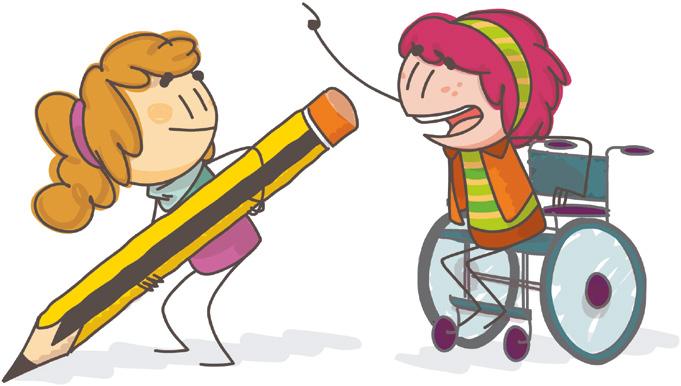


How have I learned?
1 Draw your evolution of this unit in your notebook.

It was difficult and I didn’t follow the rhythm of the class.
I made an effort in some aspects, but I resolved my difficulties. It was easy and I followed the rhythm of the class.
Music
31 U1
for a healthy life ? ? ? ? ?
© GRUPO ANAYA, S.A., 2023 - C/ Valentín Beato, 21 - 28037 Madrid.
All rights reserved. No part of this publication may be reproduced, stored in a retrieval system, or transmitted, in any form or by any means, electronic, mechanical, photocopying, recording, or otherwise, without the prior permission of the publishers.







































































































